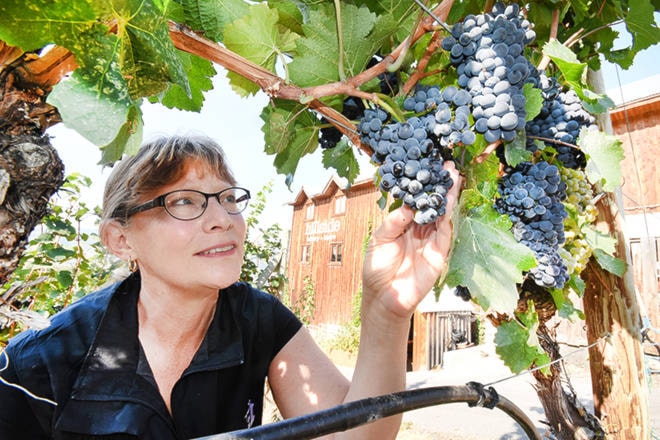It’s about time, but more importantly, it’s about place.
That’s the feeling of a group of Naramata Bench wineries about the recently submitted proposal to have the wine-growing region between Naramata and Penticton become an official Sub-GI (geographic indicator).
Currently in B.C. there’s only a handful of geographic names that are allowed on a label, something which is highly regulated by the (Vintners Quality Alliance) VQA process.
One of those is Okanagan Valley, of which, if the Sub-Gi proposal is approved by the provincial legislature, could then legally be preceded by “Naramata Bench.”
In 2015 the Golden Mile appellation (a legally defined and protected geographical indication used to identify where the grapes for a wine were grown) in the Oliver region was approved, the first Sub-Gi in B.C.
“Having a geographic regulator so that the truth in labelling is evident and there is an auditing process to prove where the grapes are from is imperative, because otherwise you could just put whatever you want on the label,” said winemaker Kathy Malone of Hillside Winery, who is part of the five-member Naramata Bench Sub-GI committee. “I think that in the early days, the vineyards were so young that the wines weren’t expressing fully what some of those differences might be, but now we’re at a stage where they definitely are and the world wine scene is standing up and taking notice.”
Winemaker and committee member Gavin Miller of Upper Bench Winery agreed: “It’s (Sub-GI designation) very important. It gives our wine a sense of place. If this wine industry is going to go forward. We need to have truth in labelling and labelling starts where the grapes come from that go into the wine that we make.”
Soil scientist and independent consultant Scott Smith and Pat Bowen, a PH.D research scientist at the Summerland Research and Development Centre, established the boundary configuration for the proposed Sub-Gi.
Their report provided an in-depth review of topography, climate, soil and other geographic factors that define the region.
“In a way, I’m kind of sad we don’t (currently) have to prove distinctness, although I know we could. Some of the things that came up in the soil work is really interesting,” said Malone. “There’s not a lot of areas in the world where grape vines are grown on glacial till. In fact this may be the only area; here and a small area in Washington State. That really impacts the quality of grapes and the juice.”
She added since 2011, as part of its historical commitment to the region, Hillside has sourced its grapes entirely from the bench region.
“That was borne of an understanding that there’s something special about the fruit that we get from the Naramata Bench, and the story that we tell, that’s what we want to showcase,” said Malone. “That’s how most of the wineries on the bench feel, and while they might source fruit from other areas, everyone has one or two wines in their portfolio that are 100 per cent from a specific vineyard on the bench.”
In a 19-kilometre stretch along the bench, there are 181 registered vineyards and 31 member wineries.
“It’s important because the industry is at an age now where we’re very much capable of playing on the world stage. You’ve seen competition results from all over the world where B.C. wines have done very, very well,” said Malone.
According to Miller, with bench vineyard land coming in at a quarter million dollars a planted acre, compared to around $500 in countries like Chile or Argentina, competing financially on the world market is not an opition.
“So we have to compete on quality and people who buy quality wine. They want to know where it comes from, they want to know how it’s made, they want to know what they’re drinking basically, and that starts in knowing where those grapes come from,” he said. “I think it’s an exciting time for the industry, we’re beginning to grow up a little bit.”
Malone said the proposal is now in the hands of the B.C. Wine Authority to evaluate the requirements and consult with other industry members and stake holders.
If accepted, it will then go to the B.C. legislature.
“We’re hoping (for approval) by vintage so that grapes that are picked in 2019 would qualify to have a Sub-GI on their label. That’s my wish,” said Malone.




